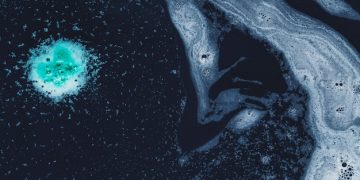
To measure the suspended solids in water, the sample was filtered using a machine from the Limnology Department at BFAR. Solids stuck to the filter paper, which was then dried in an oven and placed in a desiccator to remove any leftover moisture. The dried filter paper was weighed with an analytical balance to determine the total suspended solids using a specific formula.
For the chemical analysis, 100 ml of the water sample was placed in an Erlenmeyer flask, and a buffer solution was added. This buffer was made by mixing ammonium chloride, concentrated ammonium hydroxide, and distilled water. Eriochrome black T indicator and EDTA solution were added for titration, which was standardized against a calcium solution. The endpoint of the titration was marked by a color change from wine red to pure blue.
Water samples were also placed in BOD bottles, shaken until the dissolved oxygen (DO) matched the recorded value, and incubated for five days. The Biological Oxygen Demand (BOD) was calculated by subtracting the DO after incubation from the initial DO.
For further analysis, 10 ml of the filtered water sample was mixed with sulphanilamide and N-(1-Napthyl) ethylenediamine, left to stand for 20 minutes, and then analyzed in a spectrophotometer at a wavelength of 530 nm. Another 10 ml sample was treated with ammonium molybdate, sulfuric acid, ascorbic acid, and antimonyl potassium tartrate, then analyzed at 885 nm.
Additionally, 250 ml of water samples were preserved with HgCl2 and stored on ice. Reagents A, B, and C were prepared and mixed with the water samples, resulting in a blue color after standing for 30 minutes. This mixture was centrifuged and analyzed at a wavelength of 625 nm.
To interpret the results, descriptive analysis was conducted. The mean of the data from five stations was calculated to address the study’s first question. The mean, a statistical average, was used alongside ANOVA (Analysis of Variance) at a 0.05 significance level to determine differences between sampling sites along the Pantal River. The analysis involved calculating the correlation factor, total sum of squares, between and within sum of squares, and degrees of freedom.












































